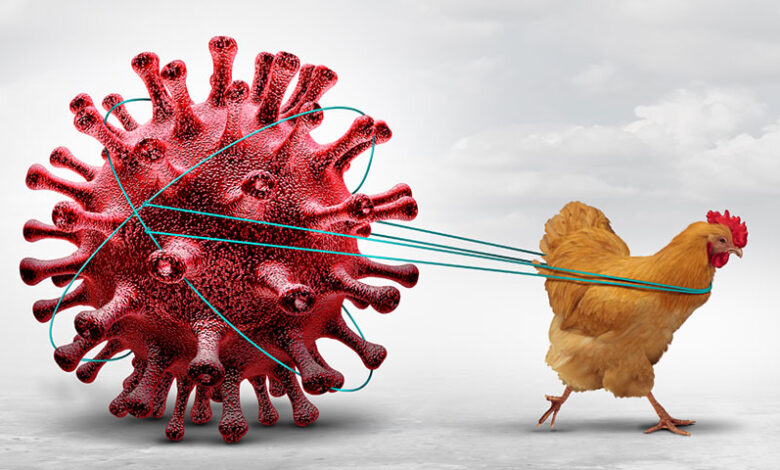Bird Flu Virus Spreads to Wildlife, Poses Economic and Health Risks: FAO Official

Islamabad:The **Food and Agriculture Organization (FAO)** of the **United Nations** has raised alarms over the spread of the **H5N1 avian influenza** virus, commonly known as **bird flu**, which has now begun affecting **wildlife**. Dr. **Madhur Dhingra**, the head of FAO’s Animal Disease Prevention Division, stated that the virus, which was previously confined to poultry, is now impacting more than **500 bird species** and **70 mammal species**, including endangered ones like the **California condor** and the **polar bear**.
### Widespread Impact on Wildlife and Livelihoods
The bird flu has severely affected areas where poultry farming is a primary source of protein. The virus poses a significant threat to food security and livelihoods in these regions. Dr. Dhingra emphasized that millions of people are facing economic hardship as a result of the virus, particularly farmers who are already struggling with the financial burden of maintaining **biosecurity measures**.
The disease’s spread to **dairy cattle** has also raised serious concerns. The **World Health Organization (WHO)** has urged stronger surveillance and biosecurity measures in farms and livestock enclosures to protect both animals and humans from potential transmission.
### Economic Burden and Job Losses
Dr. Dhingra warned that the virus is creating a major **economic burden** for farmers, who are now less likely to invest in essential biosecurity practices due to the financial strain. The continued spread of the virus, particularly in **wildlife**, may also jeopardize the **global food supply** and contribute to further disruptions in the **agriculture and livestock sectors**.
### Global Impact and Cases in Humans
FAO has reported that this year, **76 people** across the world have been infected with the **H5 strain** of bird flu, with a significant number of them belonging to the **working class**. In the **United States**, over **60 cases** have been reported, particularly in areas where **wildlife, poultry**, and now even **dairy cattle** have tested positive for the virus.
In addition, countries such as **Australia, Canada, China, Cambodia**, and **Vietnam** have also seen outbreaks in humans, birds, and livestock. Workers in farms or animal enclosures are at **moderate to high risk** of contracting the virus due to their close proximity to infected animals.
### “Limited Risk” to Humans
While the virus poses a significant threat to animals, the **WHO’s Director of Epidemic and Pandemic Preparedness**, Dr. **Maria Van Kerkhove**, stated that the **risk to humans** remains **low**. According to Dr. Kerkhove, modern science suggests that people who do not live near poultry or livestock are at very **minimal risk** of contracting the disease.
However, workers who are in close contact with infected animals are at **moderate risk**, and the level of risk can vary depending on the use of **protective equipment**.
### No Evidence of Human-to-Human Transmission
To date, there is **no scientific evidence** to suggest that the **H5N1 virus** can be transmitted from person to person. No cases have been reported where an individual contracted the virus through human-to-human contact. However, Dr. Kerkhove emphasized that as the virus **mutates**, there is a possibility that human-to-human transmission could eventually occur.
### “No Room for Complacency”
Dr. Kerkhove stressed that **vigilance** is crucial. She explained that as the virus continues to evolve, there may come a time when **human-to-human transmission** is possible. Therefore, whenever someone is diagnosed with bird flu, it is essential to conduct a thorough investigation to determine the **source of the infection**, how many people the affected person has come into contact with, and whether others have shown symptoms of the disease.
### Safety Measures and Recommendations
To reduce the risk of contracting the virus, **pasteurized milk** should be consumed, or milk should be **boiled** before use if pasteurized milk is not available. Dr. Kerkhove also highlighted the importance of a **comprehensive approach** to combat bird flu, one that integrates efforts at the **global, national, and local levels** to maintain the health of **humans, animals, plants**, and the **environment**.
The FAO and WHO continue to monitor the situation closely, urging governments and local authorities to strengthen biosecurity measures and ensure that **public health systems** are prepared to respond effectively to any potential outbreaks.






